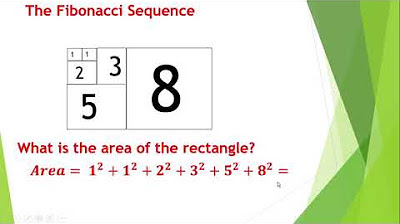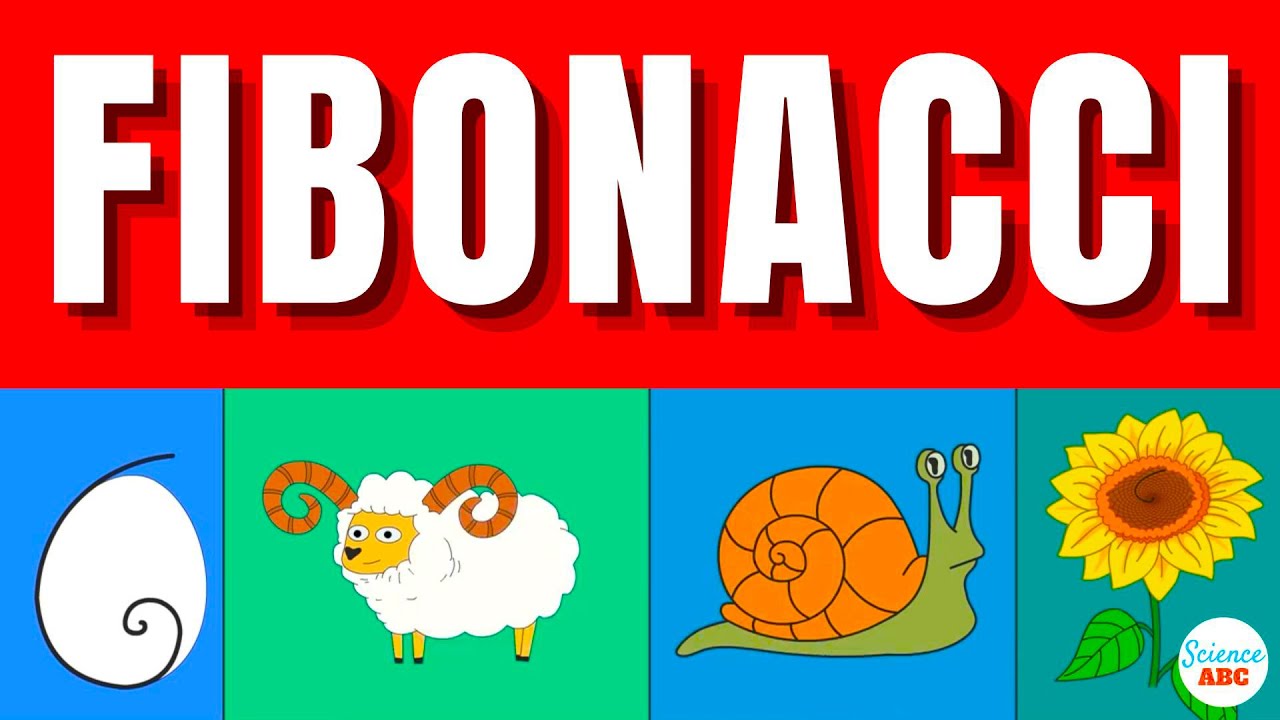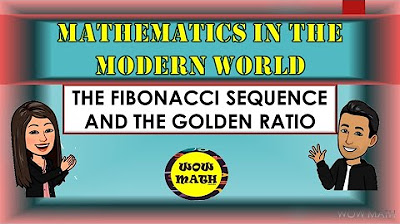Fibonacci and the Golden Mean
Summary
TLDRLeonardo Fibonacci, known for his sequence, introduced a mathematical curiosity that became pivotal in understanding growth processes in nature and art. The Fibonacci sequence, manifesting in phenomena like rabbit population growth and plant phyllotaxis, is intertwined with the golden ratio, a proportion deemed aesthetically pleasing and found in architecture, art, and music. This ratio, approximately 1.618, is also observed in the fractal patterns of nature, such as the Romanesco cauliflower, and has been applied in financial analysis through the Elliot wave principle, reflecting its universal influence across disciplines.
Takeaways
- 📚 Leonardo Fibonacci, known for his work 'Liber Abaci', is a pivotal figure in European mathematics, introducing Arabic numerals to Europe.
- 🐰 The Fibonacci sequence, originating from a thought experiment on rabbit breeding, has profound implications in mathematics and nature.
- 🌿 The sequence appears in the arrangement of leaves on plants, known as Fibonacci phyllotaxis, optimizing sunlight exposure and rain distribution.
- 🎨 The golden ratio, closely related to the Fibonacci sequence, is found in art, architecture, and music, perceived as aesthetically pleasing and harmonious.
- 📏 Geometrically, the Fibonacci sequence is represented in the spirals seen in nature, such as the shell of the Nautilus.
- 🔢 The golden ratio is approximately 1.618, and it is derived from the division of a line into two parts such that the ratio of the whole to the larger part is the same as the ratio of the larger part to the smaller part.
- ⭐ The pentagram, a five-pointed star, is associated with the golden ratio and has been considered magical since antiquity, symbolizing Venus and life.
- 🌻 The Fibonacci sequence is particularly evident in sunflowers, with the number of spirals corresponding to consecutive Fibonacci numbers.
- 🏛 The golden ratio's influence is seen in historical monuments like the Parthenon and the Pyramids of Giza, highlighting its timeless aesthetic value.
- 🎶 In music, the golden ratio and Fibonacci numbers appear in the structure of compositions and the design of musical instruments.
- 🌐 The Fibonacci sequence and golden ratio are also found in modern applications, such as fractal geometry and the Elliott wave principle in financial market analysis.
Q & A
Who is Leonardo Fibonacci and what is his significance in the history of mathematics?
-Leonardo Fibonacci, also known as Leonardo of Pisa, was a prominent European mathematician who lived from approximately 1170 to 1240. He is known for his travels to Africa, Byzantium, and Syria, where he encountered Arabic mathematics. His work, 'Liber Abaci,' published in 1202, combined this knowledge with his own reflections and had a significant impact on the adoption of the Arabic numeral system in Europe.
What is the Fibonacci sequence, and how did Fibonacci come up with it?
-The Fibonacci sequence is a series of numbers where each number is the sum of the two preceding ones, usually starting with 0 and 1. Fibonacci introduced this sequence through a thought experiment in 'Liber Abaci,' where he asked how many pairs of rabbits would result from a single pair in one year, assuming no rabbits died and each pair produced a new pair each month, with the new pairs becoming fertile after one month.
How does the Fibonacci sequence appear in nature?
-The Fibonacci sequence appears in nature in various forms, such as the arrangement of leaves on plants (phyllotaxis), the spiral patterns in sunflowers, and the structure of the nautilus shell. These patterns often follow the golden angle, which is approximately 137.5 degrees, ensuring optimal exposure to sunlight and efficient use of space.
What is the golden ratio, and how is it related to the Fibonacci sequence?
-The golden ratio, often denoted by the Greek letter phi (Φ), is an irrational number approximately equal to 1.618. It is the ratio in which a line is divided such that the smaller part is to the larger part as the larger part is to the whole. The golden ratio is closely related to the Fibonacci sequence, as the ratio of consecutive Fibonacci numbers converges to the golden ratio as the numbers increase.
How is the golden ratio used in art and architecture?
-The golden ratio is often used in art and architecture to create aesthetically pleasing compositions. It can be found in the design of buildings, paintings, and sculptures, where the proportions of elements correspond to the golden ratio, creating a sense of harmony and balance.
What is the significance of the golden angle in the arrangement of leaves on plants?
-The golden angle, approximately 137.5 degrees, is significant in the arrangement of leaves on plants because it allows for the most efficient use of space and light. By positioning leaves at this angle, plants can maximize photosynthesis without shading each other, ensuring optimal growth.
How does the Fibonacci sequence relate to the golden rectangle and golden triangles?
-A golden rectangle is a rectangle whose sides are in the golden ratio. Golden triangles are isosceles triangles where the ratio of the two equal sides to the base is the golden ratio. The Fibonacci sequence relates to these geometric shapes because the ratio of consecutive Fibonacci numbers approximates the golden ratio, which is the basis for these shapes' proportions.
What is the pentagram, and how is it connected to the golden ratio?
-The pentagram is a five-pointed star formed by the diagonals of a regular pentagon. It is connected to the golden ratio because the golden ratio can be found in its geometric properties. Each line and partial line in the pentagram is in proportion to the golden ratio, and the pentagram can be composed of five golden triangles.
How does the Fibonacci sequence appear in music?
-The Fibonacci sequence can be found in music through the structure of compositions, the arrangement of musical pieces, and the design of musical instruments. For example, the number of keys in an octave on a piano keyboard follows the Fibonacci series, and composers have been known to structure their works based on the proportions of the golden section.
What is the connection between the Fibonacci sequence and fractals?
-Fractals are self-similar geometric shapes that can be found in nature and are often based on repeating patterns. The Fibonacci sequence is connected to fractals because the patterns that emerge in fractals, such as the Mandelbrot set, often involve the Fibonacci numbers in their scaling and repetition.
Outlines

Esta sección está disponible solo para usuarios con suscripción. Por favor, mejora tu plan para acceder a esta parte.
Mejorar ahoraMindmap

Esta sección está disponible solo para usuarios con suscripción. Por favor, mejora tu plan para acceder a esta parte.
Mejorar ahoraKeywords

Esta sección está disponible solo para usuarios con suscripción. Por favor, mejora tu plan para acceder a esta parte.
Mejorar ahoraHighlights

Esta sección está disponible solo para usuarios con suscripción. Por favor, mejora tu plan para acceder a esta parte.
Mejorar ahoraTranscripts

Esta sección está disponible solo para usuarios con suscripción. Por favor, mejora tu plan para acceder a esta parte.
Mejorar ahoraVer Más Videos Relacionados

Fibonacci Sequence

The Mind-Blowing Mathematics of Sunflowers - Instant Egghead #59

Unit 1 | Lesson 3: The Fibonacci Sequence (Mathematics in the Modern World)

What is the Fibonacci Sequence & the Golden Ratio? Simple Explanation and Examples in Everyday Life

THE FIBONACCI SEQUENCE AND THE GOLDEN RATIO || MATHEMATICS IN THE MODERN WORLD

Fibonacci Sequence and Golden Ratio || Mathematics in the Modern World
5.0 / 5 (0 votes)
